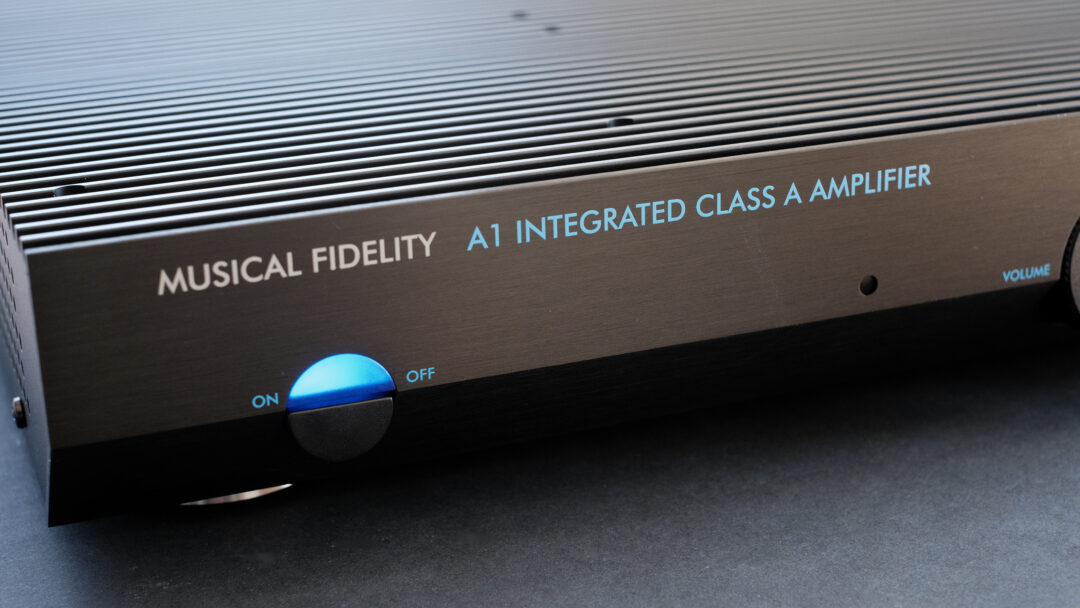A glowing blue light and a red-hot amplifier sounds like an upcoming emergency, but the little amplifier blazed through the test without a hitch. It wasn’t always like this.
The tiny Musical Fidelity A1 was once known for its beautiful sound, but the first amplifiers launched in 1985 gained a reputation for frying the output transistors. The reason was a heat so intense that you could almost sear steaks on the amplifier’s top plate. Musical Fidelity eventually solved the problem and the amplifier became so popular that it sold over 200,000 units before going out of production.
Now it’s back again: The same warm Class A design originally created by the legendary Tim de Paravicini.
Back then, it was built around a 160 VA toroidal transformer that powered four 10,000 uF capacitors. The small amplifier delivered no more than 20 watts of power per channel, but it was class A power, which, as we all know, is quite different from regular AB power.
Blazing hot
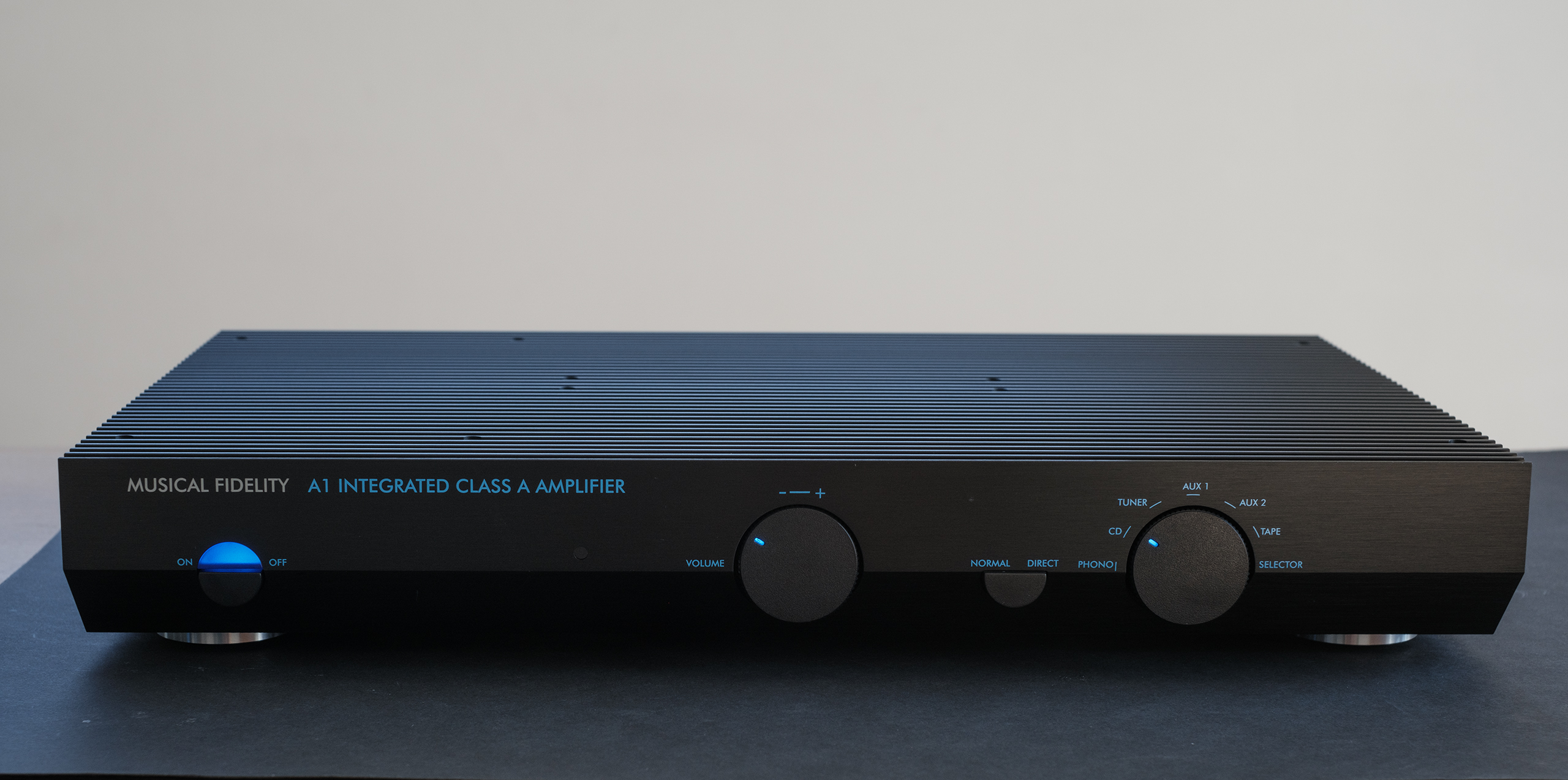
Actually, de Paravicini’s design runs in class A most of the time. If necessary, for example if the speaker load is demanding, it slides imperceptibly into AB mode to get a little more power. But 90 per cent of the time it runs in class A, which means lower distortion, but also quite a lot more heat.
The heat is due to the output transistors being on all the time, they don’t switch as they do in an AB configuration and are therefore not as efficient. Hence the low output power, which on the new model has been increased to 2 x 25 watts and a relatively hefty 25 amps of current.
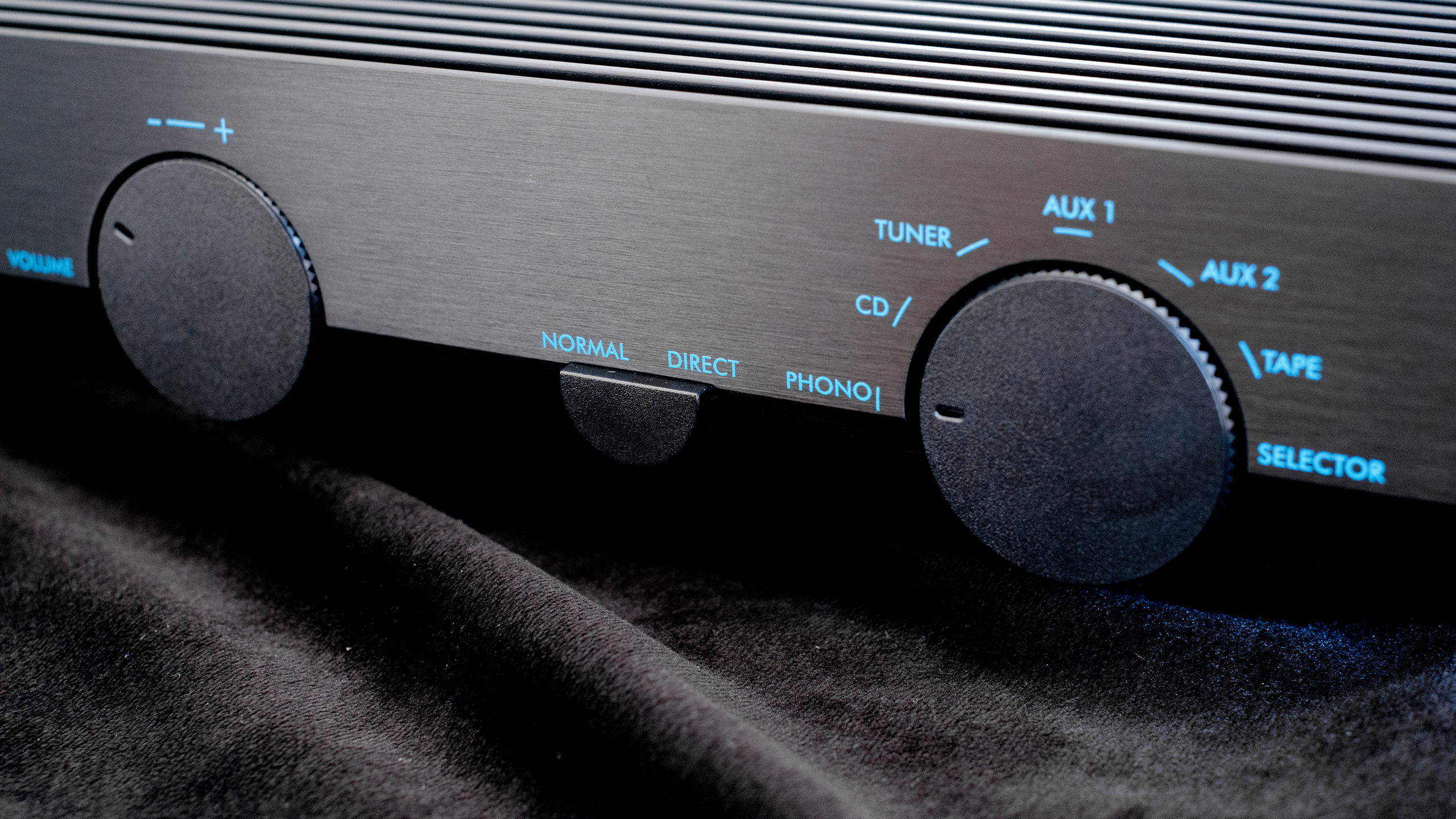
The new Musical Fidelity A1 is built like the original, but with some changes. The amplifier is designed with new, symmetrical circuits with discrete components.
The power supply has a noise filter, a larger transformer with separate windings for the left and right channels, better components such as polypropylene capacitors – and a better APLS RK volume potentiometer.
Turntable input
Like the original, the amplifier is completely analogue. But it has five analogue inputs, a line output and a variable pre-out. It also has a very good RIAA stage with a switch for either Moving Magnet or Moving Coil pickups.
The turntable input is one of the best we’ve heard on any amplifier in this price range.
The MM circuit has an input capacity of 100 pF and the impedance is set at 50 kOhm. Most MM pickups thrive best at an input capacity of 100-300 pF capacity and 47 kOhm, so it’s definitely within the range. The impedance of the MC circuit is set a little high at 1 kOhm, but it still works perfectly. Musical Fidelity says that the impedance on the MC input is nominal only and that it automatically adjusts to the pickup. They don’t say more about what range is covered.
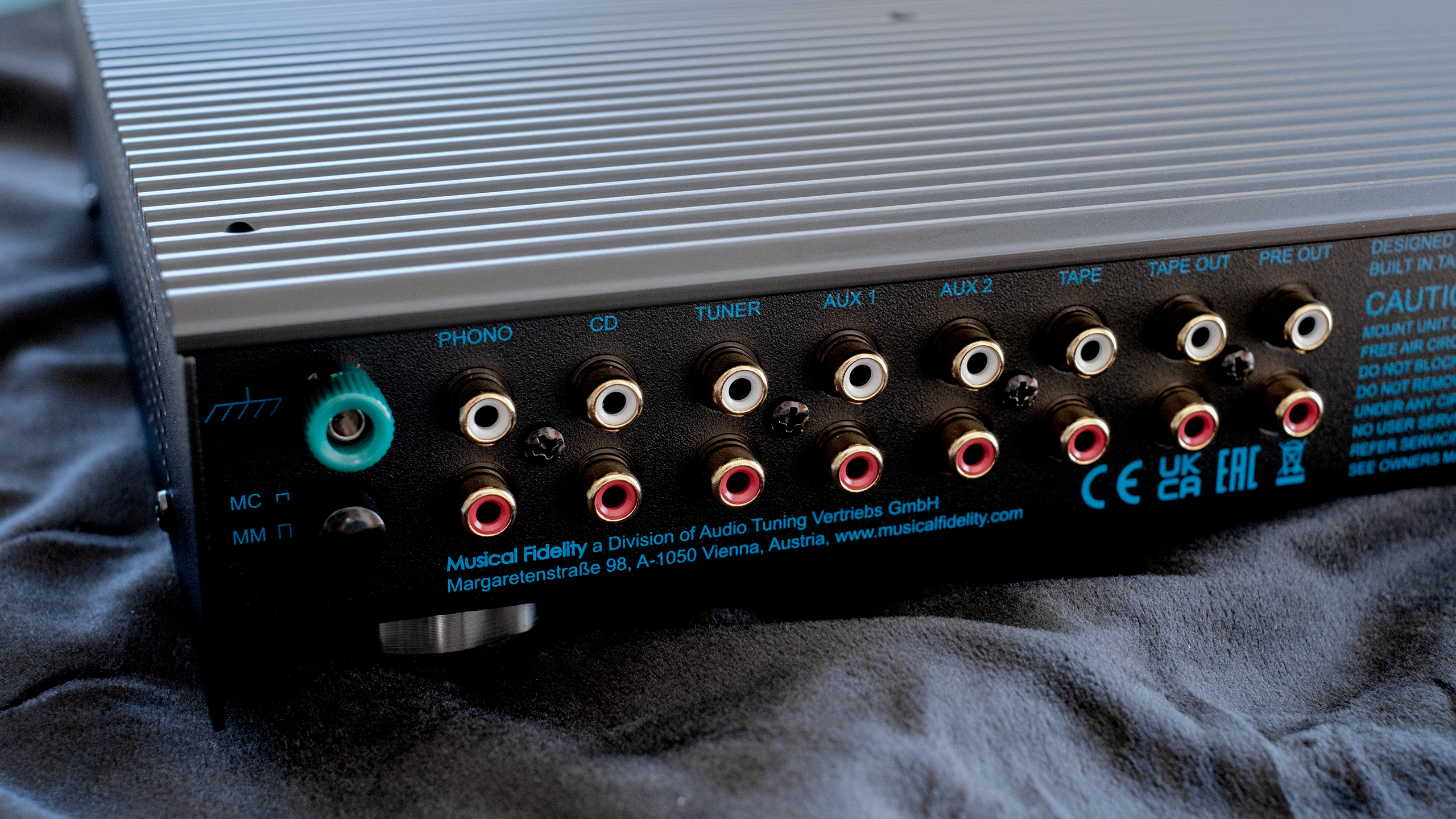
Personally, I would have preferred the MC impedance to be closer to 100 rather than 1,000 ohms.
The amplifier has a button on the front that needs some explanation. It is labelled Normal Direct, which would normally mean that pressing the button would deactivate the tone control, if there is one (the A1 has none). Here, something different happens. Direct means that the amplifier stage in the preamplifier is disconnected and the signal goes directly to the volume control instead. This results in a 10 dB loss in gain, but makes it easier to adjust the volume precisely if, for example, you have a sound source with a very high output level, writes Musical Fidelity.
Glowing sound
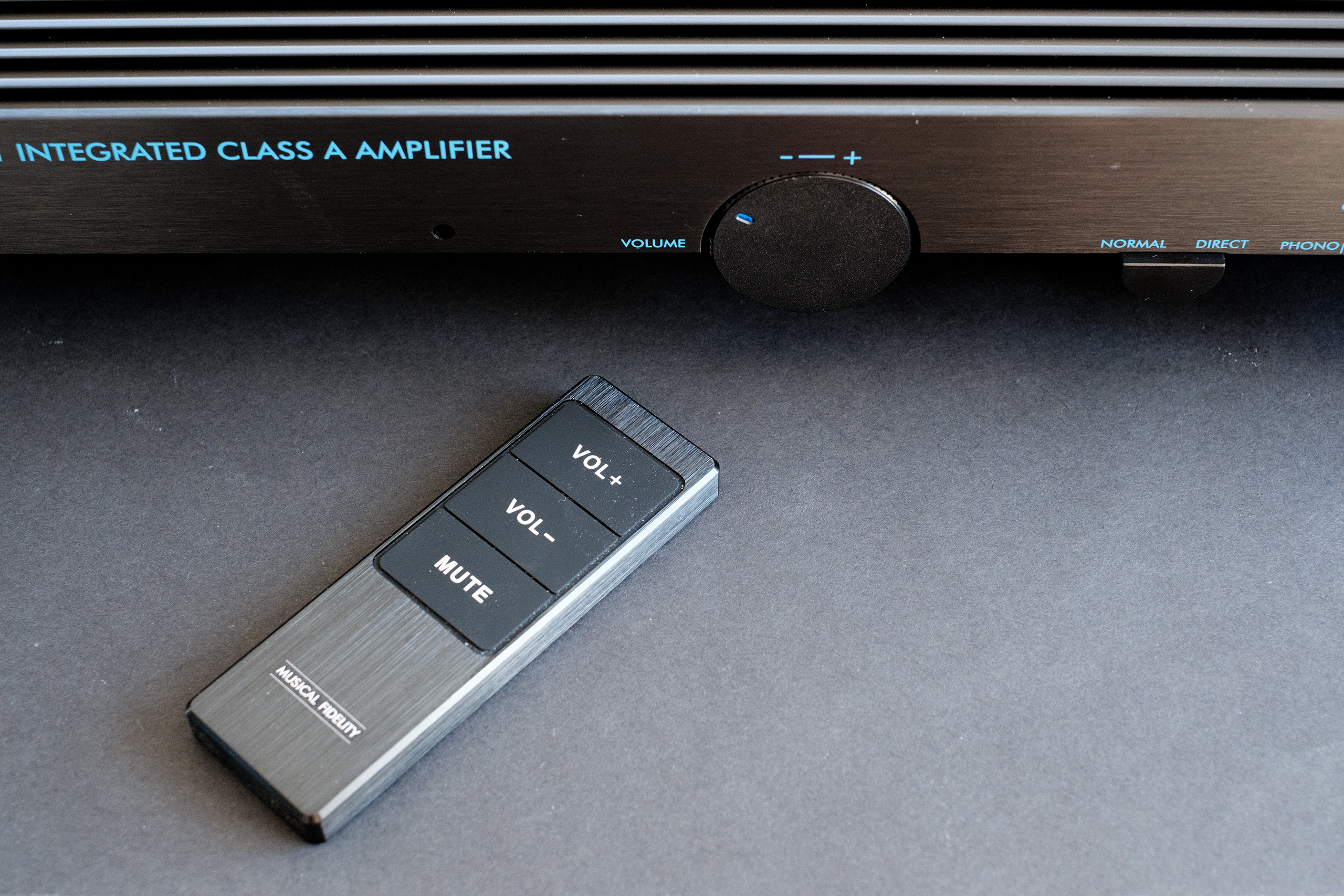
I didn’t find that the Normal Direct button contributed to the sound quality. However, the late Tim de Paravicini’s design does.
It almost felt like a reunion with an old friend. Or a re-audition this case. The amplifier has the same organic, clean, warm and noise-free sound that I remember from the original. I perceive the new version as tighter and more potent. Large speakers like the Yamaha NS-2000A are easily filled with sound and the amplifier has excellent control, even when I play loud.
British Quad pioneered the challenging electrostatic principle, and even after more than 60 years, Quad ESL 57 has a cult following.
Of course, there are limits to how loud you can play, but the Yamaha speakers are relatively easy to drive and everything sounds wonderfully rich with a beautiful, warm timbre. But without the slightly sluggish dynamics that older Class A designs sometimes have.
The amplifier is not as powerful and doesn’t deliver the same dynamic contrast as a Hegel H95, nor does it have the same detail resolution as a Rotel S14.
But that is of no importance.
The small class A amplifier completely charms the listener with a flattering warm timbre that gives everything from acoustic guitars with nylon strings to large concert pianos depth and body.
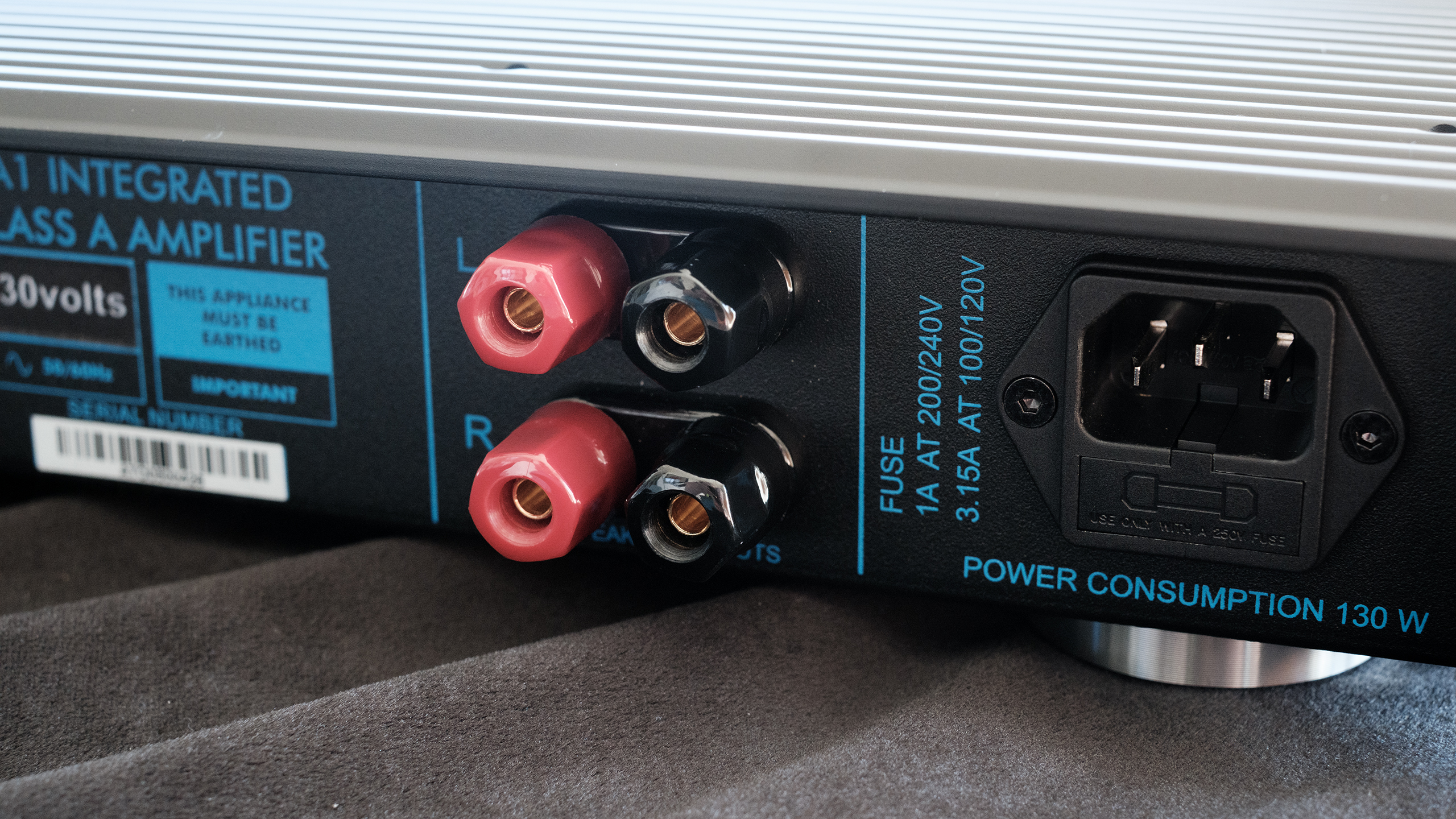
Don't be fooled by the speakers' unassuming appearance, these beat the competition in most areas.
With the larger – but also two-way – PMC Prodigy5, the bass naturally went even deeper than on the Audiovector speakers. The PMC speakers use a nearly two metre long transmission line to “gather” the bass response at lower frequencies. The relatively small Prodigy5 floorstanding speakers are said to reach down to 35 Hz (-3 dB), and together with the A1 amplifier, the result was a more potent deep bass. The notes from the double bass went a little deeper and the lowest notes from the percussion became more prominent in the soundstage.
Conclusion
The new Musical Fidelity A1 still gets hot. Very hot. If you play loud, it’s not possible to keep your hand on the top plate of the amplifier for very long at a time. But it will play. There’s no blue smoke or sparks emanating from it. It’s clearly built to last, because it showed no signs of weakness during the test period. Where it was often driven harder than you normally can with a 25 watt amplifier. Instead, it gave me some nostalgic moments and a lot of joy. Glowing joy, if you will, because that perfectly describes the sound signature of a Musical Fidelity A1. You’re simply delighted by the warm and natural atmosphere its sound creates in the room.
British finesse meets Austrian efficiency in a powerful and dynamic amplifier that is Musical Fidelity M8xi

We think
Warm and silky smooth sound in an unusually rich soundstage. Excellent turntable input. Gets very hot. Limited power means you need to steer clear of inefficient speakers.
1599 €
Specifications
- Type: Integrated amplifier
- Technology: Transistor, Class A
- Wireless: No
- Connections: 5 x unbalanced RCA in, phono, pre out, tape out
- Turntable input: MM and MC input
- Headphone output: No
- DAC: No
- Power: 2 x 25 W 8 Ohm
- Frequency range: 10 Hz – 40 kHz (-1 dB)
- Dynamic range: Not stated
- THD: Not stated
- Signal / noise: 82 dB
- Other: Remote control
- Dimensions and weight: 44 x 6.8 x 28.3 cm / 10.5 kg
- Web: musicalfidelity.com
